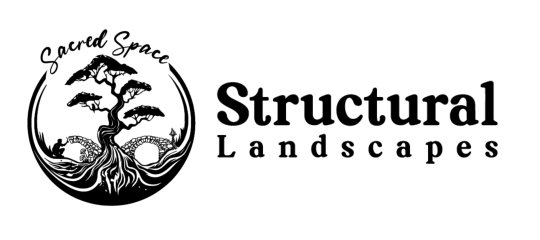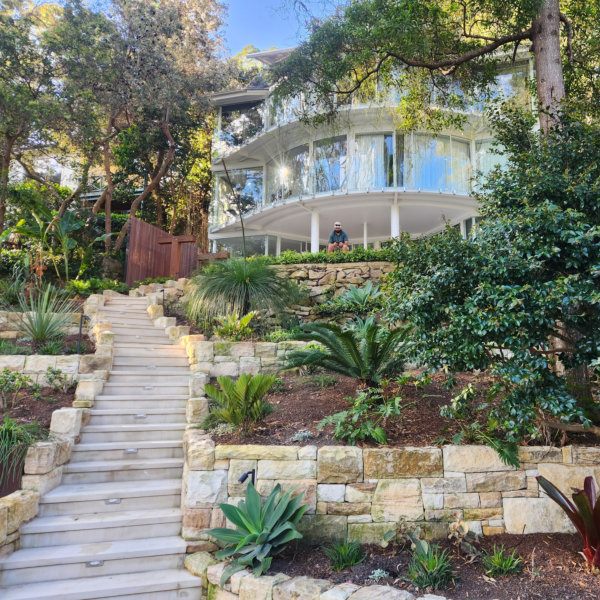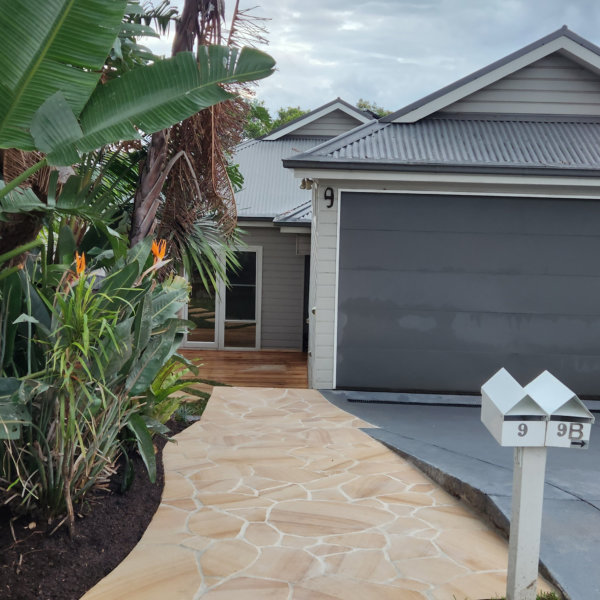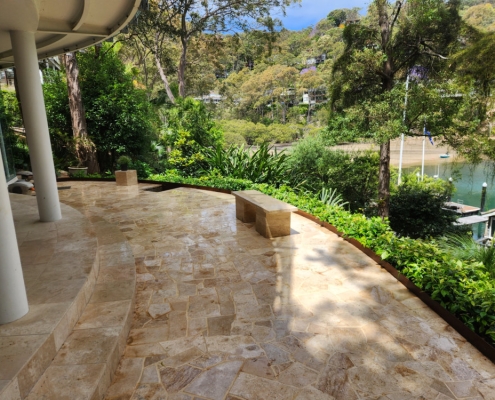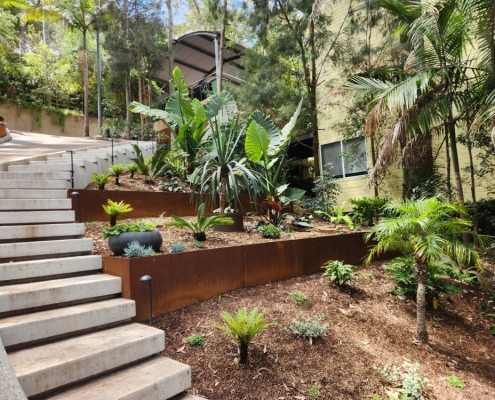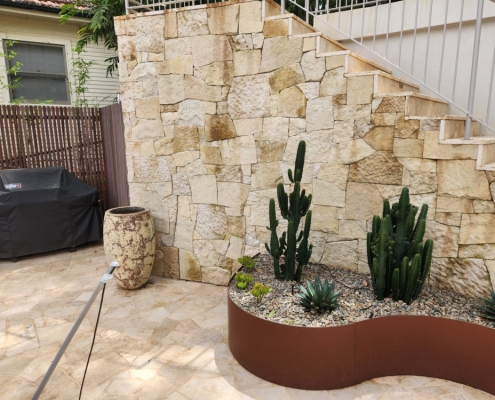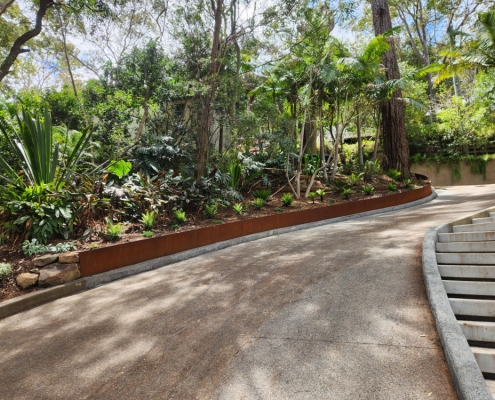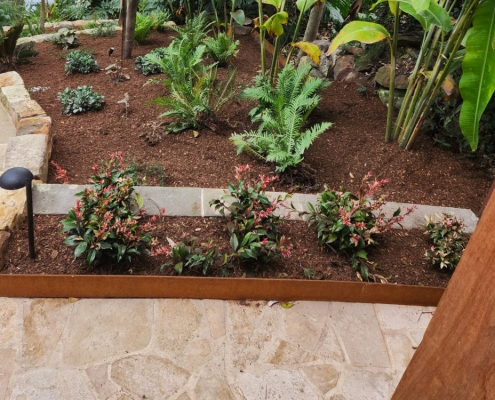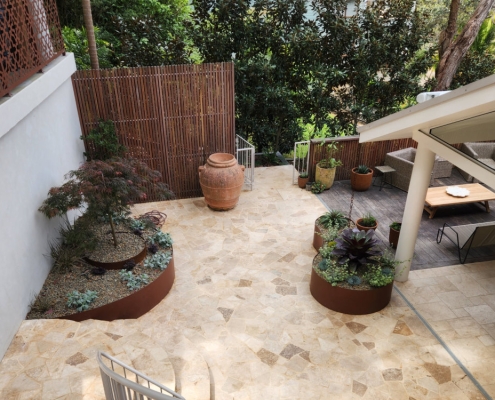Landscaping Elements
Landscaping is an art that transforms outdoor spaces into harmonious environments, blending nature and design. To achieve this, various elements come into play, each contributing to the overall aesthetic and functionality of a landscape.
Let’s delve into the key landscaping elements that shape the outdoor canvas.
Hardscape Elements
Hardscape elements encompass the non-living, solid features in a landscape. These include pathways, patios, decks, walls, and other structures.
Hardscape elements provide structure and organization to a landscape, creating functional spaces for activities while establishing a framework for the softer, living components.
Softscape Elements
Softscape elements refer to the living, horticultural components of a landscape. This includes plants, trees, shrubs, flowers, and other greenery.
Softscape elements add colour, texture, and vitality to a landscape. They contribute to the ecosystem, provide shade, and enhance the overall aesthetics of the outdoor space.
Garden and Plant Beds
Garden and plant beds are dedicated areas for the cultivation of specific plants, flowers, or themed arrangements.
These elements allow for organized plant displays, emphasizing colour schemes, themes, or specific plant types. They contribute to the overall design and character of the landscape.
Edging and Borders
Edging and borders involve the use of materials like stones, bricks, or plants to delineate different areas in the landscape.
Edging creates definition and order, preventing plants from encroaching on pathways and providing a polished, manicured appearance to the overall design.
